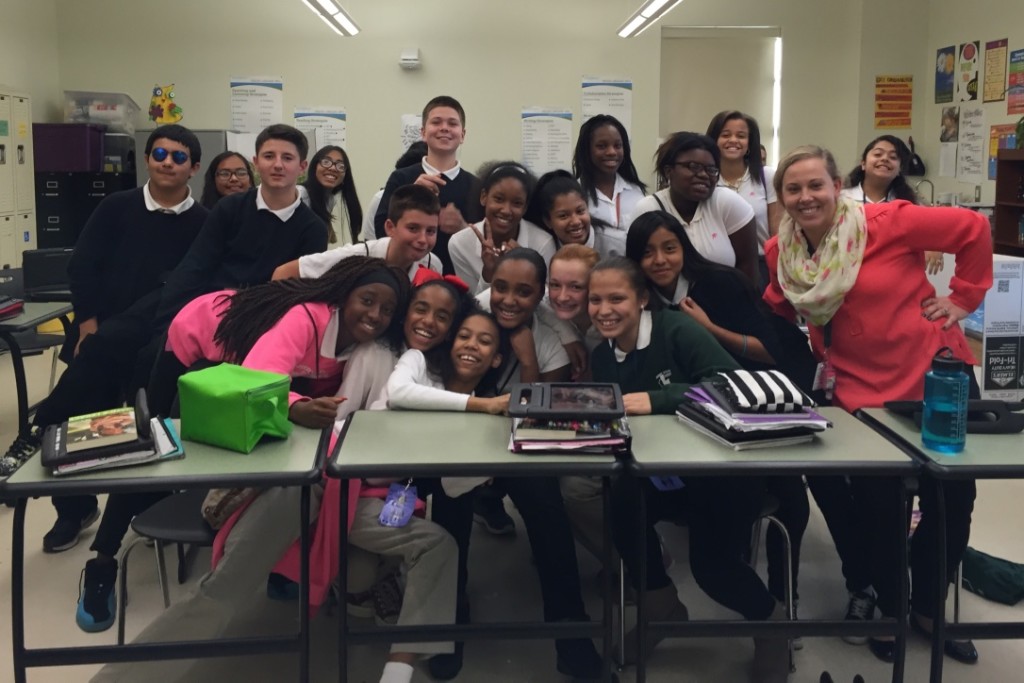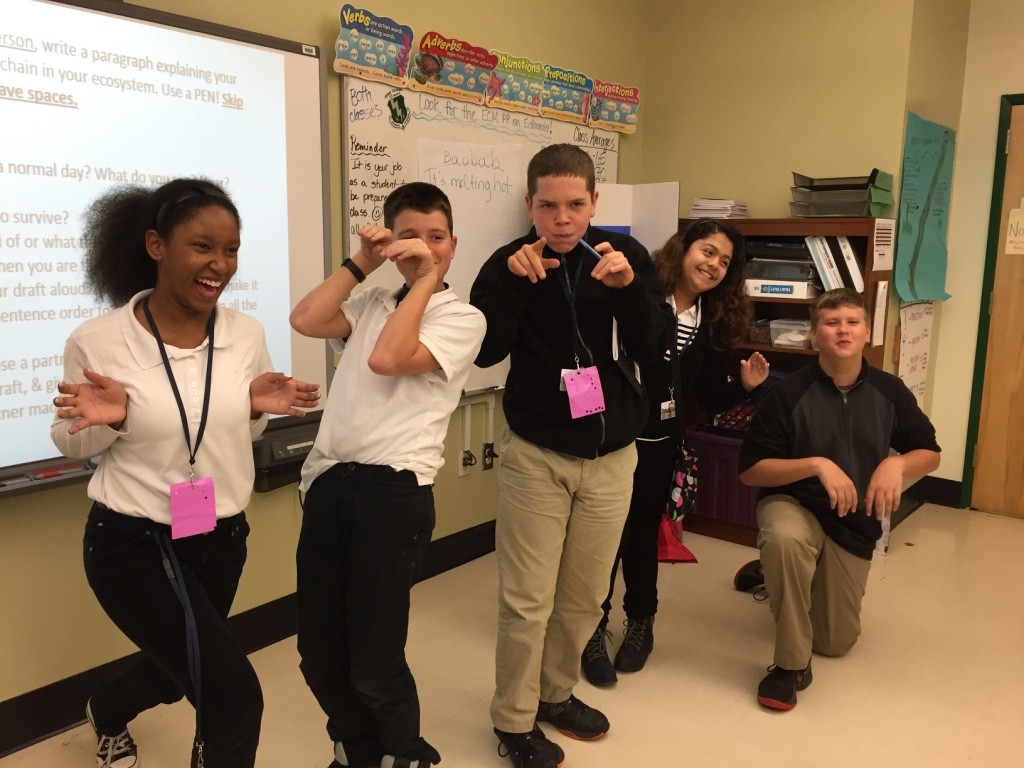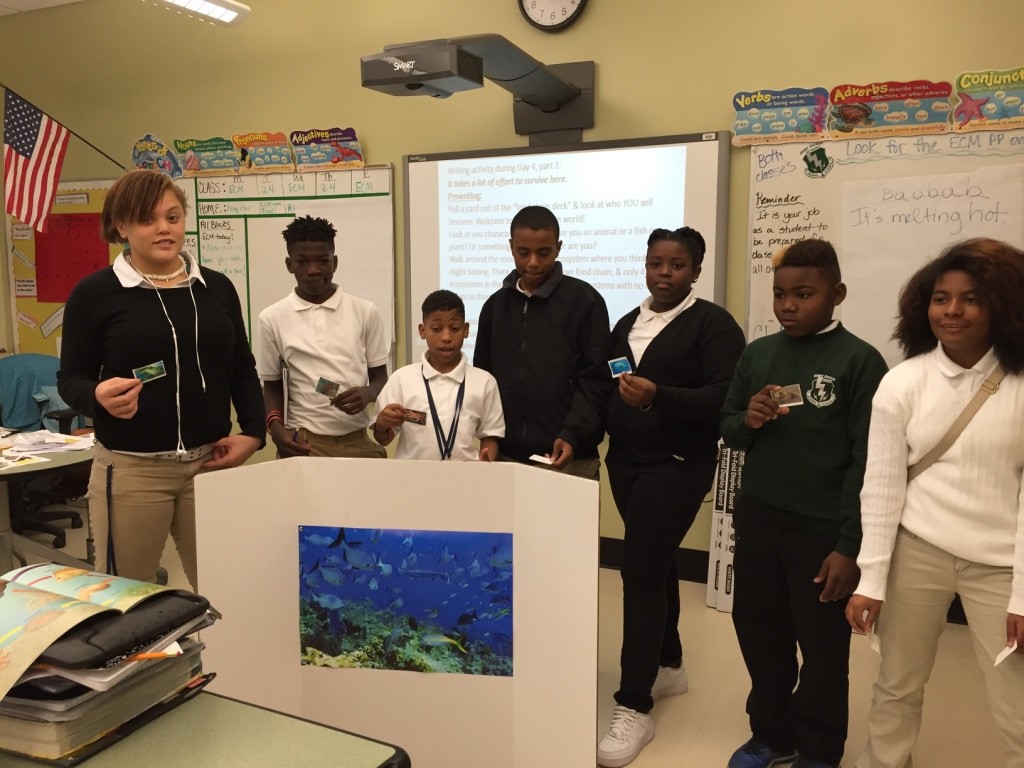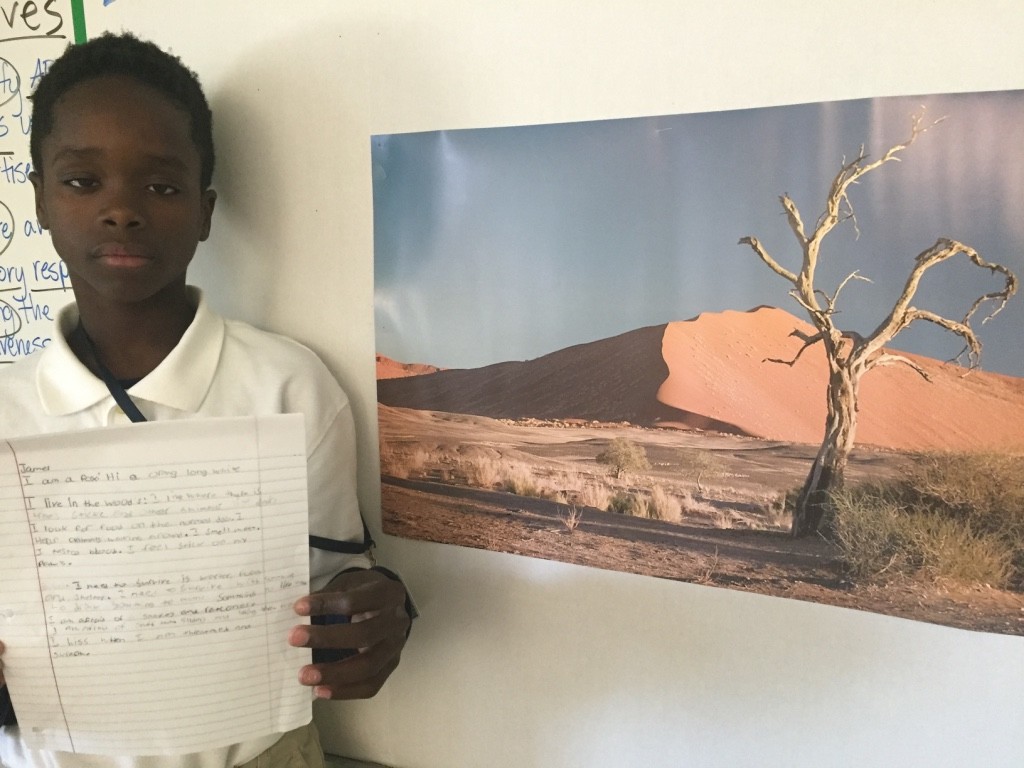“Help! Our kids blanked out on last year’s writing test. They left the pages BLANK!”
That’s the kind of call for help I’ve been asked to address with an Engaging Creative Minds (ECM) project. ECM is a local non-profit that pairs teachers and art partners to collaborate on developing creative learning strategies in Charleston County Public Schools. The Gibbes is one of ECM’s Engaging Learning Experience (ELE) partners and we address all kinds of topics, using art as a springboard to self-expression.
This past December, my fellow museum educator Lucie Medbery and I started a 5-day writing workshop (held over two weeks) at Zucker Middle School. The aim was to get 180 7th-graders to WRITE, using 7th-grade science standards around biomes as ecosystems as our “springboard.” No more tests turned in with blank spaces!

The best part of an ECM project is the collaboration between partners (Lucie and me) and teachers (in this case, Elizabeth Gleim and Shorace Guider, 7th grade English Language Arts teachers). They ask for help, we “percolate” about how we can assist them, and together we come up with a plan. And the percolation part is so much fun! Lucie has a background in gifted education in Kansas City. My background is teaching French, and for many years I have been a museum educator at the Terra Museum in Chicago and at the Gibbes here in Charleston. We both have minds that respond to images and we both love kids.
Each planning session is so exciting! We throw out ideas, look for images, and before we know it, we can see multiple paths before us. But we have to keep returning to the standards we were asked to address. It takes a few sessions, but eventually we find the path we want to take. This project took many emails, lots of phone calls, and nine different PowerPoints to get the workshop to be what we wanted.
The use of media this time was so inspiring. Each 7th grader at Zucker has an iPad and we used them big time! When my teacher realized that I was continually morphing the PowerPoint presentations, she asked if she could upload them to the students’ iPads, and it worked so well!
At first, the students got so excited about the images that they would fast forward to see what was coming next. Then, we started loading our “homework” assignments on their iPads, while encouraging them to actually write with a pencil in their ECM composition books, and skip lines so they could edit their work. The students had it all on their personal tablets: the images, the assignments, and what was coming up next. They responded beautifully to the POWER it gave them.

One of the highlights of this project, for me anyway, was our “Biome to Biome” day. Each student drew a card (a specific animal) out of a deck of different animals. They had to assume that animal’s identity, find their biome, and then interact with the other “animals” in that biome. Then, of course, we asked them to write about it. With this exercise, it didn’t seem to matter where the students were in the 7th-grade hierarchy of reading, understanding, and writing levels. They just GOT it!

From “It all started at the Watering Hole” to “How I survived a Food Chain,” these students were fired up with images and ready to write down what they saw, what it meant, and how they felt about it. The writing samples are, of course, varied according to individual abilities, but each student seemed to have that aha moment.

What a wonderful feeling by the end of the workshop to say “now write,” and have them all pick up their pens (not pencils!—we wanted them to learn to edit) and with great enthusiasm, WRITE! Many thanks to the Gibbes Museum and to ECM for giving us such fun opportunities to link art with learning!
—Elise Detterbeck & Lucie Medbery, Museum Educators and Guest Bloggers
Published January 14, 2016

